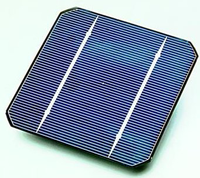
The new imaging technique is an important step in improving the efficiency of solar cells. The imaged solar cells are composed of a mixture of polymers that generates energy by exchanging electrons. The exact composition of the mixture is essential to the cell’s efficiency, but couldn’t be imaged accurately until now. The new technique now allows researchers to investigate and improve the process of mixing.
The researchers used electron tomography to create images of the solar cell at the nano scale: combining images acquired with an electron microscope results in a 3D image. CWI researcher Joost Batenburg developed the computing technique for this project. This very efficient algorithm is able to produce a detailed 3D-image based on only a small number of electron microscope images. Applying the algorithm to a set of microscopy images obtained with a special treatment that increased the contrast of the solar cell material, resulted in a 3D image that is much more detailed than those made with current techniques.
Using 3D images is a trend in nanotechnological material science. New imaging and computing techniques allow for the imaging of produced nanomaterials and study the production process. This knowledge can be used to improve the production and quality of nanomaterials.
Reference:
Roehling, J. D., Batenburg, K. J., Swain, F. B., Moulé, A. J. and Arslan, I. (2013), Three-Dimensional Concentration Mapping of Organic Blends. Adv. Funct. Mater., 23: 2115–2122.
